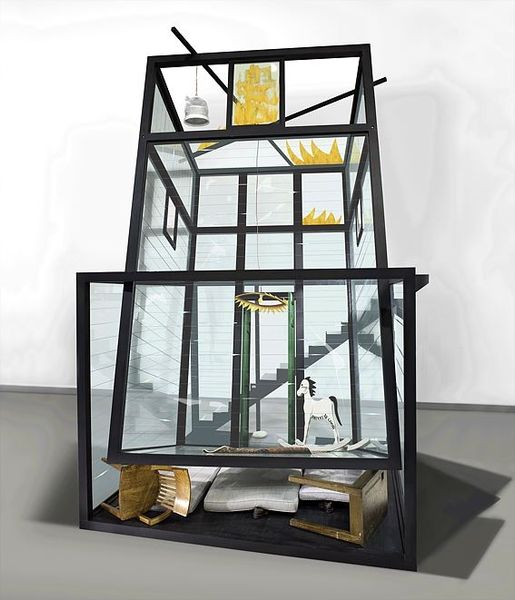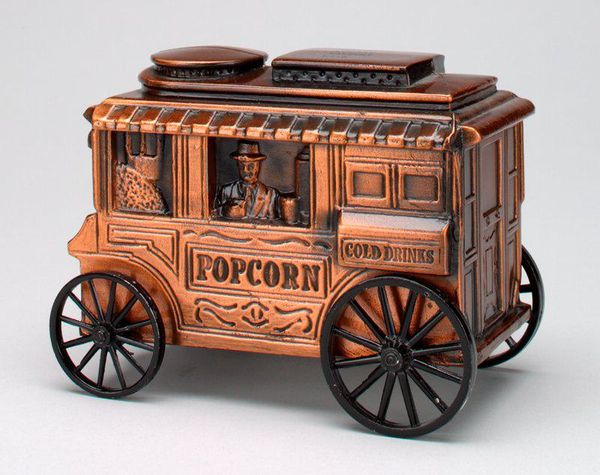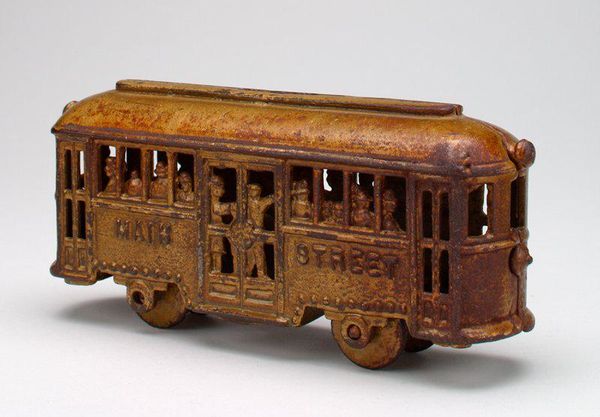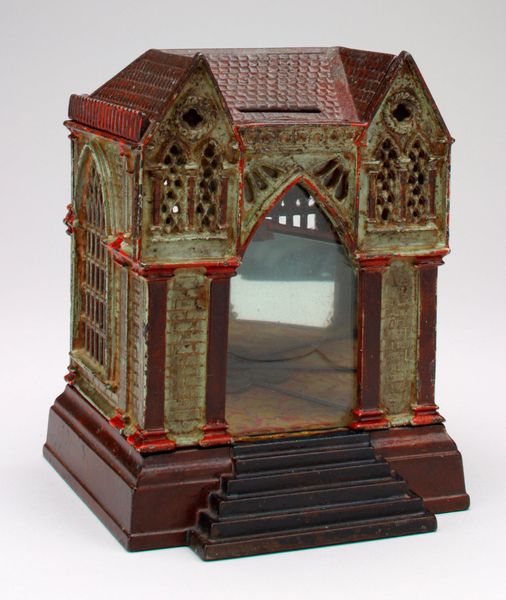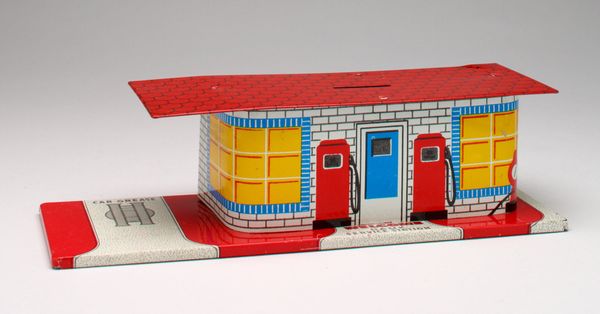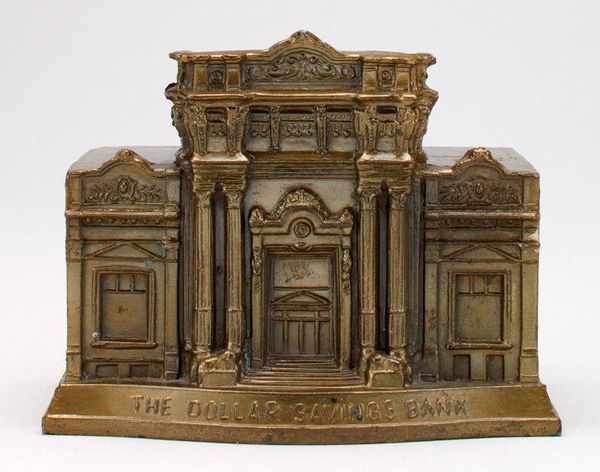
Copyright: Red Grooms,Fair Use
Curator: Looking at Red Grooms' "London Bus" from 1983, one is immediately struck by its vibrant energy. It's a mixed-media sculpture, a riot of colour and form contained within this transparent case. Editor: Yes, it's almost aggressively cheerful, isn't it? This assemblage projects a real sense of movement, of manic activity barely contained. I get the impression of cultural satire meets children’s toy. Curator: Precisely! Grooms worked with collage, using various materials to construct this almost cartoonish representation of the iconic double-decker bus. Notice how the flattened perspective and bold colours relate to pop art conventions, reflecting on mass culture, production and consumption? Editor: It certainly challenges high art presumptions. I'm thinking about labour. I notice the artist rendering a mundane scene - taking the bus, which, is typically invisibilized. But I am prompted to think: who exactly is consuming art of this period? And how do depictions of urban mobility reinforce or critique class divides? It makes me question its positionality and impact during the Thatcher years. Curator: The sculpture really pulls you in to consider a range of London experiences as material processes. Grooms clearly drew from observing life. Notice the individual passengers. How their clothing, postures, how they are all different. It makes you ponder their individual journeys but also the mass journey. This reflects a sort of working life experience that can connect with wider political economy of London's population in that era. Editor: And speaking to the specifics of those travels, that could raise other difficult ideas, too. This could provoke needed dialogue around issues of marginalization within such a dense urban context. Grooms's work captures not just the physicality of the city, but the cultural milieu that produces complex narratives for inhabitants. Curator: Yes. And he does it with an undeniably playful sensibility that welcomes accessibility to all classes, making his London a place for anyone who may see it or use it. A real social equalizer through accessible construction methods that promote visibility of different populations! Editor: Perhaps. For me this artwork provides entry point for discussions regarding accessibility and cultural commentary to be expanded and questioned through time. Curator: Well put. It leaves us contemplating the ways artists engage with everyday experiences of those navigating labor practices. Editor: Exactly. This work certainly resonates through its historical setting, sparking thought regarding diverse topics that we touched on just now.
Comments
No comments
Be the first to comment and join the conversation on the ultimate creative platform.

